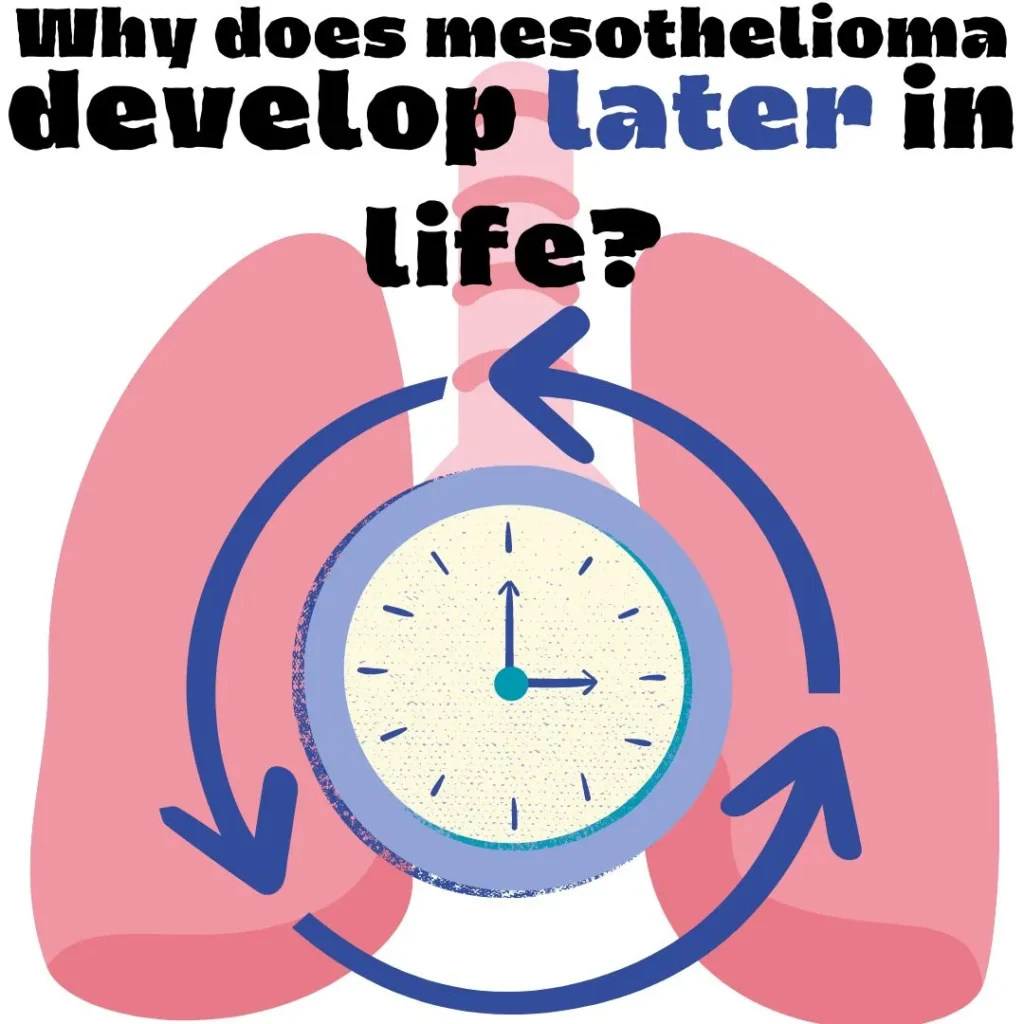Key takeaways: The latency period of mesothelioma is the time elapsed between asbestos exposure and mesothelioma onset, and lasts anytime between 20-50 years. During this time, mesothelioma can’t be targeted, treated, or reversed, so it’s an area rich with implications for treatment and possible prevention. Currently, we know that early exposure and relatively high concentrations of asbestos are associated with a shorter latency period.

What is a Latency Period of Mesothelioma and Why is it Important?
Mesothelioma is notorious for its latency period, or the “lag time” between a patient’s asbestos exposure and the onset of mesothelioma. The mechanisms of carcinogenesis, or the ways in which cancer develops, are not largely understood in the context of mesothelioma, which makes understanding the latency period difficult. Hypotheses about the chronic inflammation associated with asbestos are the most widely accepted. These hypotheses lend themselves toward acknowledging asbestos as usurping normal immune function. Importantly, faulty immune function doesn’t occur all at once; instead, it takes
decades for usurped immune function to have noticeable effects. While it differs depending on context, the average latency period for mesothelioma is around 20-50 years after asbestos exposure. Patients usually do not have symptoms of a “latency period” until mesothelioma tumors have entirely developed; from there, patients report chest pain, fatigue, and difficulty breathing, among other symptoms.
What Affects one’s Latency Period?
Surprisingly, different factors might contribute to the latency period, like age, gender, occupational versus environmental versus second-hand exposure, and genetic predisposition. Some people exposed to asbestos won’t develop any disease; others might develop asbestosis or a more chronic (but less fatal) asbestos-related disease; still others will develop mesothelioma. Because there are myriad factors compounding over decades of latency, it’s difficult to pinpoint what culminates during a patient’s latency period. Some studies have tracked the latency periods of mesothelioma in asbestos workers, the families of workers, and residents living near asbestos production sites, and have found differing latencies for each group. The latency period of mesothelioma cannot be anticipated, but clinicians can make informed estimates based on preliminary research. The dose-time-response relationship has shed light on mesothelioma development after asbestos exposure. Employees exposed to higher concentrations of asbestos fibers early in their careers versus later were at a significantly higher risk for mesothelioma development. In addition, higher concentrations of asbestos fibers are also loosely associated with shorter latency periods. These associations elucidate the mechanisms of latency—why it happens, what happens during it, how it might be targeted—for future research.
Is There a way to Prevent Mesothelioma During the Latency Period?
Currently, mesothelioma can’t be intercepted during the latency period. Because the mechanisms of carcinogenesis can’t be identified—and therefore, cannot be targeted through treatments—there isn’t a way to reverse the disruptions caused by ingested asbestos fibers. However, spreading awareness about the latency period is critical for a.) keeping people exposed to asbestos aware of the potential to develop mesothelioma; b.) helping people identify symptoms of mesothelioma sooner; and c.) ensuring patients receive correct diagnoses.
If you or a loved one has been diagnosed with mesothelioma or another asbestos-related disease, you should not have to face it alone. This website is filled with information about mesothelioma, such as common sources of exposure, some of the best hospitals to be treated at, and even legal information, should you wish to pursue a claim. For more information regarding you or a family member’s diagnosis, please call us at (800) 505-6000 or fill out the form on our Homepage.
Sources:
https://www.policlinico.mi.it/AMM/medicina_lavoro1/rml/pubblicazioni/art15.pdf
